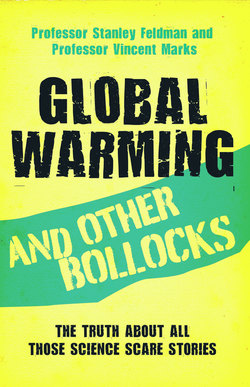Читать книгу Global Warming and Other Bollocks - Stanley Feldman - Страница 21
На сайте Литреса книга снята с продажи.
Climate modelling
ОглавлениеAll the predictions of the future behaviour of the climate are produced from models that are based on past events. Most of the data used to construct these models comes from the same sources. If there are errors in this information it will be copied and exaggerated in all the models. Models of this kind have been likened to pop art, because, like the paintings of Andy Warhol, they project only the most obvious features on to a larger or longer picture. They are bound to reflect a personal interpretation of information rather than solid, verifiable evidence. They inevitably ignore some subtle details and they exaggerate others. They are limited by the impossibility of knowing every feature of a complex, multifaceted, ever-changing picture.
Many parameters, such as the exact contribution of water vapour and of the clouds to global warming, are immeasurable or unknown. The practice, used in some of the scariest models, of labelling years as either warm or cold from the size of the rings in tree trunks has been shown to be so grossly inaccurate that the predictions based on them are considered fraudulent. The best model is only as good as the weakest information used in its construction. Many of the factors that might determine the global weather pattern, such as cosmic radiation and solar-magnetic effects, are omitted because they are uncertain or unpredictable.
In response to the criticism that instead of the predicted increase in global temperatures in the past nine years there has been a 0.4ºC fall, and the failure of all the models to predict past events, such as ‘The Little Ice Age’. A senior scientific adviser to the IPCC (International Panel on Climate Change), Dr Trenberth, admitted that the models were not intended to be predictions but were designed to cover a range of possibilities. They are meant only to be what-if scenarios. Unfortunately they have been treated as proven facts by the media, by politicians and by environmentalists who do not appreciate the level of uncertainty in their predictions.
Few weather stations equipped with the most sophisticated monitoring techniques would confidently predict the weather next year, let alone 50 years hence. The longer the timeframe of these projections, the greater will be the magnification of any initial error. It is little wonder that these models produce widely different predictions of future events. They often differ by a factor of 300 per cent. Bigger models do not necessarily produce more accurate predictions. Not all evidence is equally robust and, before decisions are made, based on these predictions, it is essential to appreciate their weakness. The possibility of bias and of a misinterpretation of the limited information on which they are based should be borne in mind.
Before we consider the evidence that underlies the various predictions that have been made about the consequences of the present and future levels of CO2, it is necessary to ask the questions, ‘Is the world getting hotter?’ and ‘If so, is it doing so at a historically unusual rate?’ If these two questions give the convincing answer yes, then we must consider the evidence that this is due to an increase in atmospheric CO2 caused by man.
